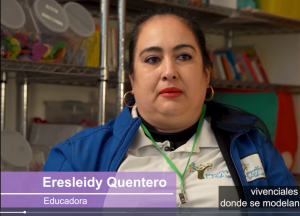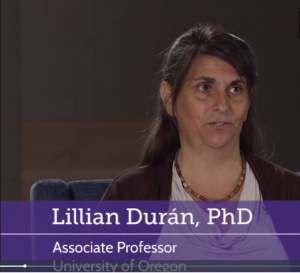Choosing and Using Visual Media
Video Use Guidelines
The following guidelines apply to produced video created by Cultivate Learning’s media team.
Captions
Content developers and media producers will coordinate to get videos captioned and applied according to Section 508 accessibility standards. Content developers and editors review applied captions to ensure correct spelling and names.
All videos should be captioned in the video’s primary language. For example, if Spanish is the primary language spoken in the video, captioning needs to be done in Spanish. When funding is available, captioning should be done in additional languages. For example, a video in Spanish also captioned in English and Somali.
A Note About Captioning in Spanish
Gender permeates not only pronoun forms but adjectives, objects and even nouns. It is particularly important to get the gender right when people are speaking, as in video transcriptions and subtitles. To insure this, we have the following suggestions:
- When videos are to be translated, please have translators review the SRT/TextEdit texts together with the actual video, to make sure the speakers’ genders are correctly represented.
- If the originals are text only, have the authors make sure to identify the gender of the speakers and the people referred to. Words like “child” and “teacher” do not convey gender and leave translators guessing, with little to work from.
- When possible, include a disclaimer to explain why a project has used a specific gender form.
Credits
Work with the media producer and project manager to determine necessary credits and attributions for video projects. Use the attribution styles section as a guide and determine if project roles should be attributed (e.g., producer, reviewer, writer, editor).
Guidelines for Identifying People in Videos
We usually don’t include program names or where someone works in our videos. Interview videos include some identifying information. Other videos do not. Check the guidelines below for more details.
If you need to share more identifying information about a person in the video, talk with the media producer first. They can help make sure we protect people’s privacy and follow our media style.
Interview Videos (Interviews do have a graphic on screen with identifying details)
- Include:
- For adults, first and last name
- Credentials, if they have any, like PhD, etc. (Refer to the Titles of Person in Produced Video section below)
- Role or job title
- For children, first name only
- Do not include:
- The name of the program (family child care, center-based child care, home visiting, or any program children attend)
- Program names in facilitation manuals or presenter notes
- Sometimes include:
- Organization names may be included, but only in certain cases. Check with the media producer.
- How to know what to include:
- The interviewer, media liaison, or media producer will have information about how the person would like to be identified.
- This Information may be listed as part of the source asset metadata.
- Always check with the media producer if you are unsure.
Program Footage of Teaching Practices or Children in Action (Program footage does not have a graphic on screen with identifying details)
- Do not include:
- Program, educator, or children’s names in the video.
- Program, educator, or children’s names as part of the facilitation manual or presenter notes.
- Captioning may include names but this would not be part of a graphic on screen identifying the people in the video.
Note: The formatting will follow the media guidelines. Check with your media producer for more information.
Examples:
- Alice Franklin, Educator, Family Child Care
- Alice Franklin, Early Learning Coach
- Alice Franklin, Trainer
- Alice Franklin, PhD, Associate Professor, University of Washington
Image examples:


Titles of Person in Produced Video
If a PhD, use PhD at the end of their name instead of Dr. at the beginning. For example: Susan Sandall, PhD, Cultivate Learning, University of Washington.
Refer to the Common Names and Terms, A Terms section (academic degrees and academic titles in) for more information.
When requesting video edits, provide the full name, title, and organization the person is affiliated with according to the guidelines listed above in the Guidelines for Identifying People in Videos section.
.
